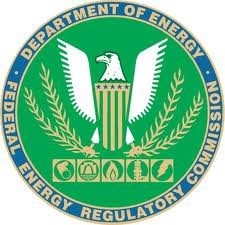Benefits of TRANSMISSION?
August 12th, 2013
DOH! This is NOT rocket science. This came out last month, posted on the CapX 2020 site, and around the same time, there was a PR push about the tax payments, “benefits,” that local governments were receiving for the CapX 2020 transmission lines. This report is all about the “benefits” and not about the costs, let’s be clear on that:
Now I’ll take a look at this…
What it looks like is advance work for the 765kV overlay, for which there is no logical “need” claim. They want to turn “planning” on its head, and put “benefits” at the top, the first item on the check list, in “planning.” I’ll be using a lot of “quotes” here because I’m not buying it.
What they advise, what they’re trying to sell, is that transmission planning should:
1) Identify potential transmission projects that could supplement or replace baseline reliability projects and to develop a comprehensive list of their likely benefits.
2) Estimate the value of as many of the identified benefits as practical.
3) Determine whether the proposed transmission investments would be beneficial overall by comparing the magnitude of estimated economy-wide benefits with estimates of the total costs of the projects.
4) Address cost allocation.
They say that “planners must plan for the highest value first…”
Citing my favorite Posner decision, they quote, “To the extent that a utility benefits from the costs of new facilities, it may be said to have “caused” a part of those costs to be incurred, as without the expectation of its contributions the facilities might not have been built, or might have been delayed.
Benefits should be weighed at the outset when assessing need, in essence benefits supplanting need as reason for a transmission project. Yeah, OK, what’s new???
(still reading)
JCSP Big Picture – who pays? WE DO!
July 2nd, 2013
Transmission — it’s all connected. In looking at the Minnesota rulemaking, and the existing and proposed rules that utilize the word “regional,” I’m thinking about big picture stuff, the big proposals in the wings, and that Joint Coordinated System Plan (JCSP) map sure presents a big picture. For some reason, I’ve not been able to find the full JCSP report until recently:
Who cares about JCSP? Well, WE’D better care, because look who’s paying for the transmission build-out (p. 68 of Vol. 1):
Look at the numbers for Midwest ISO, a $-10,293, or for MAPP, a $12,292, that’s a COST, not a savings. MISO and MAPP get nominal production cost savings and massive load COSTS. This is not news, but is worth repeating as we discuss “regional.” And another take with the same take-away of big costs for MISO and MAPP customers, used by our good friends at AWEA to promote this transmission buildout in their flyer called “Green Power Transmission and Consumer Savings” (flyer below):
Read the whole thing:
What a deal, eh?
Look what AWEA has been advocating to make this happen:
Critical Energy Infrastructure Information NOT!
June 26th, 2013
At today’s 7849-7850 Rulemaking (PUC Docket 12-1246) “Advisory Committee” meeting, a discussion was had… Commission staff has wisely proposed that a map be included showing system transmission infrastructure in the Application, and that notices also have a project map showing nearby transmission lines. Makes sense to me! Particularly considering Minnesota’s policy of non-proliferation of transmission lines:
But I was shocked to hear some who should know better claim that maps of transmission lines are a tightly-guarded Critical Energy Infrastructure Information top secret! Today’s discussion of CEII and inclusion of transmission maps in an application and in notices was disturbing to say the least. There was no specific information regarding CEII categories at the meeting (internet access, anyone?), so I sent everyone a missive and attached the CEII definition from the FERC website, and this definition from MISO’s Non-Disclosure Agreement, to clarify the status of transmission maps: NON-CEII!
And from the MISO Non-Disclosure Agreement, it’s ever so clear:
The lengths that these utilities go to to keep such crucial information from the public is astounding — it’s not that they don’t know, because they are many things, but they are NOT stupid.
Who cares about whether a transmission map is CEII or not? Well, Xcel sure does, look at the ruse here to keep a transmission map out of the record:
And that map never did get in — though today I’d raise a stink, well, today I AM raising a stink. Why? Maps of the surrounding transmission system should be included in applications and notices, as proposed by Commission staff because, as we say in transmission, “it’s all connected,” and without a system map, it’s impossible for parties, agencies and landowners to visualize the plan and how the proposed infrastructure fits into the whole. Due to Minnesota’s non-proliferation policy, it’s also important information for notices because it will aid landowners’ assessment of their risk and whether or not to participate in a given docket.
Here’s the map that I’d entered in the 2007 Power Plant Siting Act Annual Hearing to show CapX 2020 Phase I (pink) and subsequent projects (blue), and its relation to the coal plants in queue at that time:

See how it’s all connected? Without that visual aid, it just doesn’t present the full picture!
FERC on Reliability of Bulk-Power System
June 16th, 2013
FERC, the Federal Energy Regulatory Commission, is at it again. Join in on the free webcast, also no need to register, and it’s really stimulating stuff! “Reliability of the Bulk-Power System” Doesn’t get much better than that!
This webcast could be useful, because we all know that Reliability and the Bulk-Power System are one of those conflated things, because the “Bulk-Power System” is about marketing and shipping everywhere and anywhere, and “Reliability” is more the inverse of these bul-power transfers, which can trigger instability by promoting such a high-capacity grid that the magnitude of the transfers, the long distance, and need for reactive power puts the system at risk.
Rulemaking – Certificate of Need 7849
June 12th, 2013
How to work up excitement about the Certificate of Need rulemaking??? On its own, it’s dry, detailed, wonkish stuff, thrilling only to those of us who live and breathe need decisions and utility infrastructure siting and routing… but may there’s some pizazz in the machinations surrounding input, like lack of public representation on the Advisory Committee such that even my tremendous bulk doesn’t even it out. Does Xcel deserve THREE representatives? ITC two? “Participating Utilities” two, “Wind Coalition” one and none for Goodhue Wind Truth? Here’s the list:
Plus they’re not posting the drafts on the rulemaking site, so the public has no idea what’s being proposed:
And minutes from the first meeting:
To get to the docket, go to www.puc.state.mn.us and then “search eDockets” and search for 12-1246.
We’ll be talking about the Certificate of Need criteria next, and here’s what’s proposed:
7849.0120 CRITERIA CERTIFICATE OF NEED REQUIREMENTS.
A certificate of need must be granted to the applicant on determining that:
Subpart 1. Need Demonstration. An applicant for a certificate of need must demonstrate that the demand for electricity cannot be met more cost effectively through energy conservation and load-management measures.
Subpart 2. Renewable Resource Preferred. An applicant proposing an LEGF that uses a nonrenewable energy source must demonstrate that it has considered the use of renewable energy sources, as required under Minnesota Statutes section 216B.243, subd. 3a.
Subpart 3. Assessment of Need Criteria. In evaluating a certificate of need application, the
commission shall consider the criteria contained in Minnesota Statutes, section 216B.243, subd. 3, as well as the following:
A. whether the probable result of denial would be an adverse effect upon the future adequacy, reliability, or efficiency of energy supply to the applicant, to the applicant’s customers, or to the people of Minnesota and neighboring states, considering: the region;
(1) the accuracy of the applicant’s forecast of demand for the type of energy that would be supplied by the proposed facility;
(2) the effects of the applicant’s existing or expected conservation programs and state and federal conservation programs;
(3) the effects of promotional practices of the applicant that may have given rise to the
increase in the energy demand, particularly promotional practices which have occurred since 1974;
(4) B. the ability of current facilities and planned facilities not requiring certificates of need to meet the future demand; and
(5) the effect of the proposed facility, or a suitable modification thereof, in making efficient use of resources;
B C. whether a more reasonable and prudent alternative to the proposed facility has not been demonstrated by a preponderance of the evidence on the record, considering:;
(1) D. the appropriateness of the size, the type, and the timing of the proposed facility compared to those of reasonable alternatives;
(2) E. the cost of the proposed facility and the cost of energy to be supplied by the proposed facility compared to the costs of reasonable alternatives and the cost of energy that would be supplied by reasonable alternatives;
(3) F. the effects of the proposed facility upon the natural and socioeconomic environments compared to the effects of reasonable alternatives; and
(4) G. the expected reliability of the proposed facility compared to the expected reliability of reasonable alternatives;
C. by a preponderance of the evidence on the record, the proposed facility, or a suitable modification of the facility, will provide benefits to society in a manner compatible with protecting the natural and socioeconomic environments, including human health, considering:
(1) the relationship of the proposed facility, or a suitable modification thereof, to overall state energy needs;
(2) H. the effects of the proposed facility, or a suitable modification thereof, upon the natural and socioeconomic environments compared to the effects of not building the facility;
(3) I. the effects of the proposed facility, or a suitable modification thereof, in inducing future development; and
(4) J. the socially beneficial uses of the output of the proposed facility, or a suitable modification thereof, including its uses to protect or enhance environmental quality; and.
D. the record does not demonstrate that the design, construction, or operation of the proposed facility, or a suitable modification of the facility, will fail to comply with relevant policies, rules, and regulations of other state and federal agencies and local governments.




